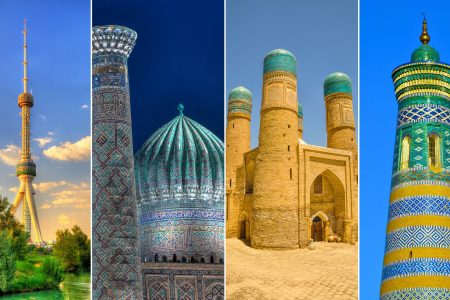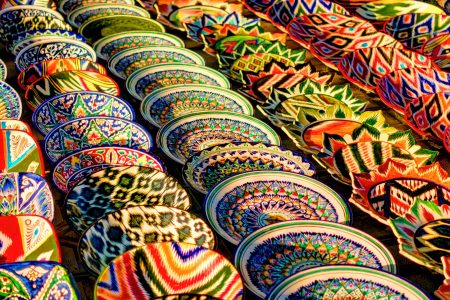7 million
Official: Kyrgyz, Russian
Bishkek
Borders: Kazakhstan, China, Kyrgyzstan, Uzbekistan
Kyrgyzstani som (KGS)
Cold winters (October-May) and hot summers (June-September).
Kyrgyzstan: Discovering the Green Region of Central Asia
Kyrgyzstan, situated in Central Asia, is an undiscovered gem with breathtaking landscapes, a rich history, and a unique culture. Bishkek, the capital of Kyrgyzstan, serves as the political, economic, and cultural hub of the country. Surrounded by the Ala-Too mountains, Bishkek presents a picturesque backdrop, blending Soviet architecture with modern elements, creating a unique atmosphere. The population of Kyrgyzstan is diverse, primarily composed of Kyrgyz people, along with ethnic minorities such as Uzbeks, Russians, Oudmourt, and other groups, contributing to the country’s cultural richness. As of my last update in January 2022, the population of Kyrgyzstan was approximately 6.5 million.
Local life in Kyrgyzstan is marked by a combination of nomadic traditions and modern influences. While yurts are less commonly used for permanent dwellings today, they remain an integral part of cultural life, often utilized during festive events and celebrations. Local markets, like the Osh Market in Bishkek, provide an immersive experience into daily life, where locals sell local products, crafts, and culinary specialties. Social life is also influenced by the culture of hospitality, where guests are warmly welcomed. Music and dance play a significant role in social gatherings, with frequent performances during festivals and celebrations.
History
The history of Kyrgyzstan is rich and complex, shaped by diverse influences from various civilizations and empires over centuries. The territory of present-day Kyrgyzstan has been inhabited since the Stone Age, with nomadic populations migrating to the region. Throughout the centuries, the area was influenced by Chinese, Persian, and Mongol empires. In the 17th century, the region fell under the rule of the Kokand Khanate, a Central Asian state. However, in the 19th century, the Russian Empire began extending its influence, leading to Kyrgyzstan becoming part of the Russian Empire following the Treaty of St. Petersburg in 1864. After the Russian Revolution of 1917, the Kyrgyz Autonomous Soviet Socialist Republic was established in 1920 as part of the Russian Soviet Federative Socialist Republic. In 1926, it became a separate republic within the Soviet Union. During the Soviet period, Kyrgyzstan underwent significant economic and social transformations, including the collectivization of agriculture and industrialization.
Kyrgyzstan gained independence from the Soviet Union in 1991, following the Moscow coup. Askar Akayev became the first president of the country. The early years of independence faced economic and political challenges, but Kyrgyzstan established a multi-party political system and adopted a new constitution in 1993. Since then, the country has experienced periods of political stability and turbulence, with changes in government through popular movements and presidential elections. Challenges such as poverty, corruption, and ethnic tensions have been present, but Kyrgyzstan has also made economic progress, particularly in developing its tourist sector due to its spectacular natural landscapes and rich cultural heritage.
Today, Kyrgyzstan is a parliamentary republic with a growing economy and a diverse population contributing to the cultural wealth of the country.
Landscapes Diversity:
Kyrgyzstan is renowned for its spectacular diversity of landscapes, ranging from majestic mountains to verdant valleys and crystalline lakes. This variety makes Kyrgyzstan a paradise for adventure enthusiasts and nature lovers. Here are some remarkable landscapes found in the country:
Tian Shan Mountains: Kyrgyzstan is dominated by the Tian Shan Mountain range, often referred to as the “Celestial Mountains.” This imposing mountain chain, traversing the country from northeast to southwest, is adorned with snow-capped peaks, sparkling glaciers, and deep valleys. Jengish Chokusu, the highest peak in Tian Shan, stands at over 7,400 meters.
Issyk-Kul Lake: Situated at an altitude of 1,607 meters, Issyk-Kul Lake is one of the world’s largest mountain lakes. Surrounded by the Tian Shan mountains, the lake offers crystal-clear waters and picturesque beaches. Travelers can explore coastal villages, participate in water activities, and enjoy the breathtaking scenery.
Chon-Kemin Valley: This picturesque valley is renowned for its lush green meadows, winding rivers, and dense forests. It provides exceptional opportunities for hiking, horseback riding, and other outdoor activities. Visitors can also experience traditional Kyrgyz life by staying in yurts with local hosts.
Skazka Canyon (Fairy Tale Canyon): True to its name, this colorful canyon features strange and varied rock formations resembling characters from fairy tales. The vibrant hues of the rocks create an enchanting landscape, offering visitors a unique and almost surreal experience.
Sary-Chelek Valley: Located in the Sary-Chelek National Park, this valley is renowned for its eponymous lake. Surrounded by dense forests, Sary-Chelek Lake is a site of exceptional natural beauty, housing a variety of flora and fauna.
Song-Kol Plateau: At an altitude of 3,016 meters, the Song-Kol Plateau offers panoramic views of the surrounding mountains. Kyrgyz nomads use this region as pastureland for their livestock, and visitors can experience authenticity by staying in yurts and participating in pastoral life.
This diversity of landscapes makes Kyrgyzstan a gem for nature lovers, hikers, and adventurers seeking to explore varied and pristine environments.
Kyrgyz Hospitality
Hospitality holds a central place in Kyrgyz culture, reflecting nomadic traditions and the warmth of the people. Welcoming guests is considered a significant virtue, and Kyrgyz people are known for their generosity towards foreigners. Greetings are often accompanied by firm handshakes and welcoming smiles. Visitors are frequently invited to share a meal or a cup of tea upon their arrival.
Yurts, traditional Kyrgyz dwellings, play a crucial role in hospitality. Guests are often received in yurts, where they can share meals, exchange stories, and experience daily life with the locals. Food holds a special place in Kyrgyz culture, with hosts offering a variety of local dishes. It is common for guests to share a meal as a sign of hospitality, reinforcing social bonds.
Tea ceremonies are a widespread custom in Kyrgyzstan. Hosts typically offer tea accompanied by sweets or bread, creating a moment of conviviality. These ceremonies provide opportunities for informal discussions and story-sharing. When a guest leaves a place, it is common for hosts to accompany them to a certain point, even if it’s just a few steps outside the house, demonstrating respect and appreciation for the guest.
Kyrgyz people are known for presenting gifts to their guests, ranging from local products to crafts or other meaningful items. These gestures symbolize gratitude and respect towards visitors. Foreigners are often welcomed with positive curiosity, as Kyrgyz people are generally willing to share their culture and ensure visitors feel welcome.
Hospitality in Kyrgyzstan goes beyond simple gestures; it represents a deep connection with the community and a sincere willingness to share daily life with others. Visitors often feel like part of the family, making the Kyrgyz experience unique and memorable.
Kyrgyzstan, nestled in the heart of Central Asia, boasts a wealth of stunning natural sites, historical monuments, and cultural destinations. Here are some must-visit places in this Central Asian gem:
Each region of Kyrgyzstan offers something special, catering to adventure enthusiasts, history buffs, and those seeking tranquility in the heart of nature.



